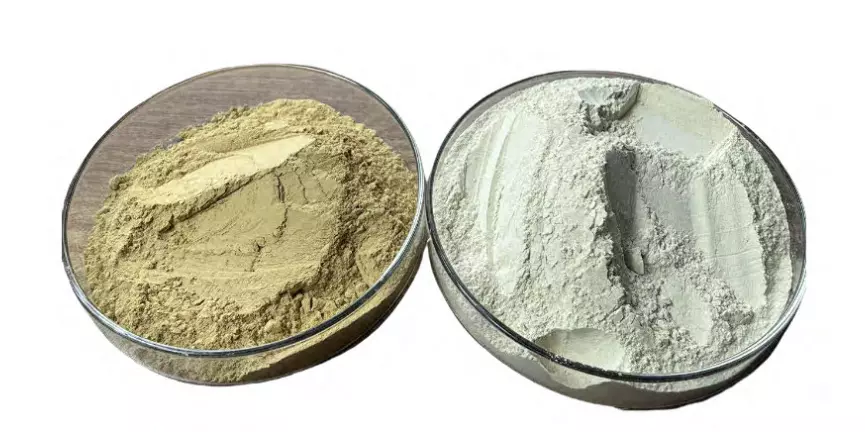
What Detergent Is Best for Hand Washing
While washing machines undoubtedly save a lot of time and effort, it doesn’t mean that hand-washing can’t produce effective results. In fact, with the help of a good laundry detergent for hand washing, it’s one of the best methods to gently clean your clothes. This particularly applies to pieces marked “hand wash only.” Yes, we know that many modern laundry machines do feature a program mimicking hand washing – but a manual treatment is still the best risk-free choice for the most sensitive garments.
Using mild detergent is essential for hand-washing, as it will protect both your skin and treated fabrics. If possible, try to avoid harsh surfactants such as SAS and rather opt for a formula containing nonionic surfactants. Check the ingredient list for cocamide diethanolamine (cocamide DEA), fatty alcohol ethoxylates, or Cocamidopropyl Betaine.
For washing sensitive fabrics such as cashmere and wool, look for detergents with lanolin which also acts as a softener. Innovative no-rinse formulas are another good option – less treating means less stress for the gentle fibers.
How to Hand Wash Clothes Properly
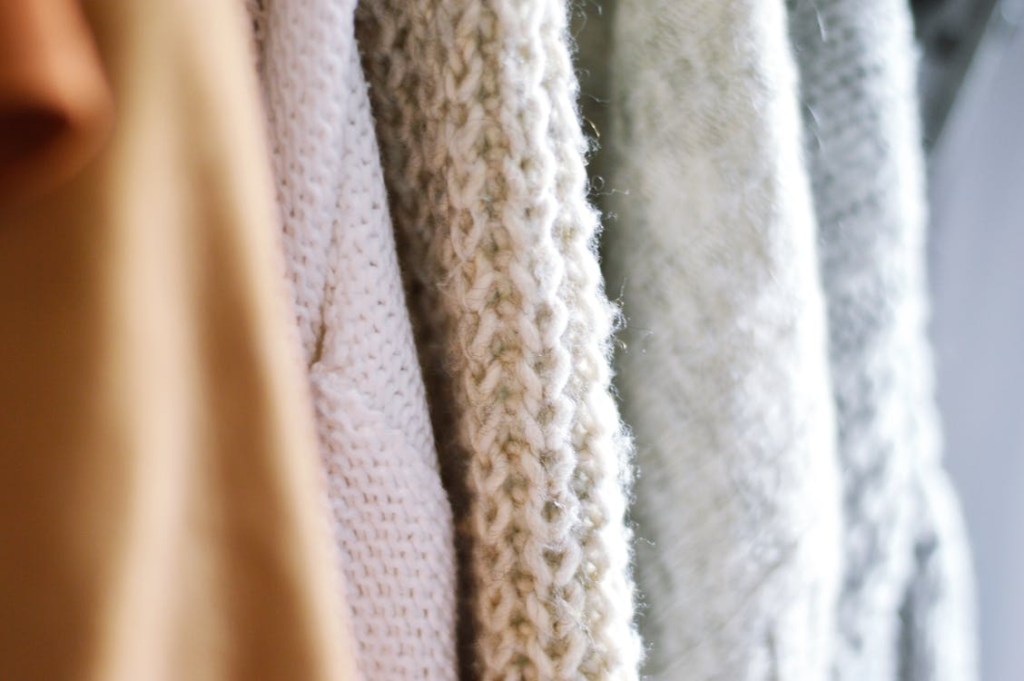
After you have separated dark and light fabrics, prepare two tubs of water – warm for washing, cold for rinsing. Keep in mind that sensitive clothes are not exposed to extreme heat inside the washing machine; hence there is no reason to torture your hands in hot water – just warm is good enough.
Immerse each piece in the water and rub it gently for a couple of minutes. If you are trying to get rid of a specific stain, focus on that spot – but don’t overdo, because too harsh or extensive rubbing might damage the integrity of the fabric. Once it looks clean, transfer it to the second tub for rinsing. Of course, if you’re washing only one or two pieces, you can finish everything in a single tub.
Now we come to the important detail. While twisting and wriggling is a common way to squeeze excess water out, it’s actually better avoided. This method leads to stretching and even breaking sensitive fibers and, even if not immediately apparent, doing it frequently, you will soon notice the difference in quality. It’s better to leave the laundry in a place where it can drip-dry for a while before hanging.
Sensitive items such as wool sweaters tolerate hand-washing better than laundry machines. Use lukewarm or even cold water, immerse the item(s) and leave it to soak for about one hour. After super-gentle rinsing, they should be left to drip off and then laid flat to dry, ideally over a drying rack. Hanging should be avoided in order to prevent overstretching.
The same method applies to silk. Use cold water and turn the treated clothes inside out before immersing. Leave them to soak for half an hour and rinse carefully. Unlike wool, silk can be hang-dried.
What Detergent Is Best for Machine Washing?
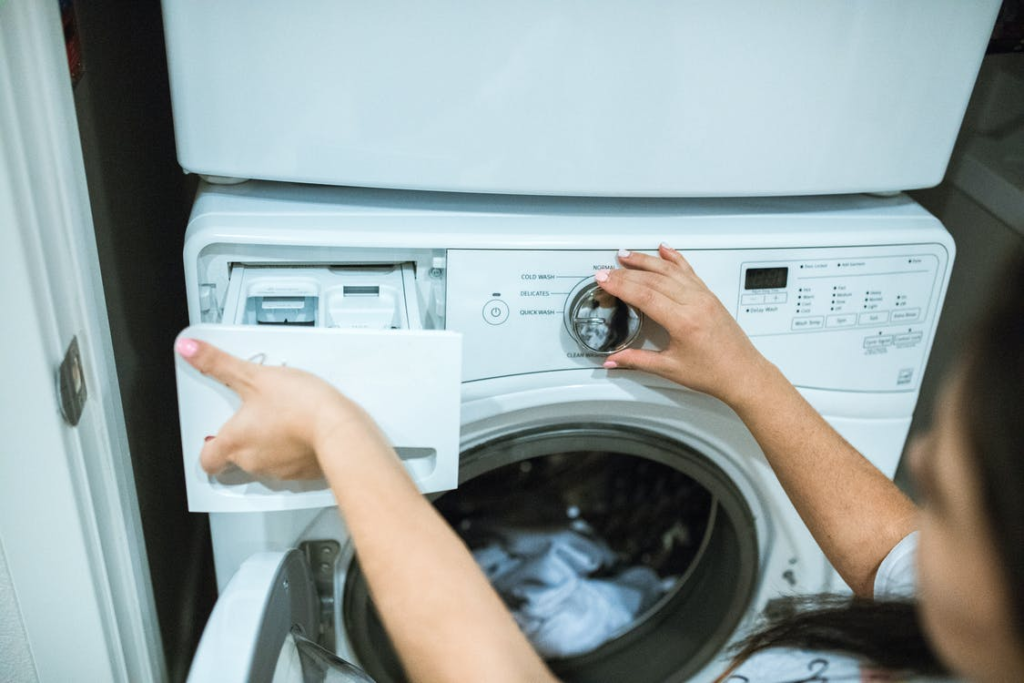
Most detergents are suitable for use in a washing machine. However, some users prefer liquid over powder detergent, due to its solvency. Even highly concentrated liquid detergent formulas contain a substantial percentage of water, resulting in a fast and complete dissolving during the washing cycle. Powder detergents, on the other hand, might leave a residue and clog the system over time. Still, contrary to the common belief, modern, quality detergent powder formulas rarely provoke any issues.
If the washing system works properly, then the risk of damages caused by residue build-up ranges from minimal to none. Also, liquid detergents contain animal fats that, if not dissolved properly, might clog up lines and valves in the same manner as powder formulas.
Problems caused by laundry detergent build-up are rarely severe and typically require only detailed cleaning and minor fixes.
One thing that you can do to ensure great results is never to overload the drum. Leave enough space for items to move freely, rubbing and cleaning each other, and let detergent dissolve without getting trapped. Moreover, avoid pouring laundry detergent directly into the drum unless entirely necessary.
Concentrated detergent formulas require smaller doses than regular economy packs. It is therefore strongly recommended to stick to the instructions provided on the package.
Enzymes featured in the ingredients list allow machine washing in lower temperatures, in shorter cycles, requiring less water at the same time. Apart from saving your time and utility bills, such laundry detergents are also environmentally friendly.
Detergent pods are multifunctional and ideal for everyone who would rather avoid dealing with precise dosing. However, they also allow less versatility of use, since their design is limited to machine washing.
Best Laundry Detergents for Babies
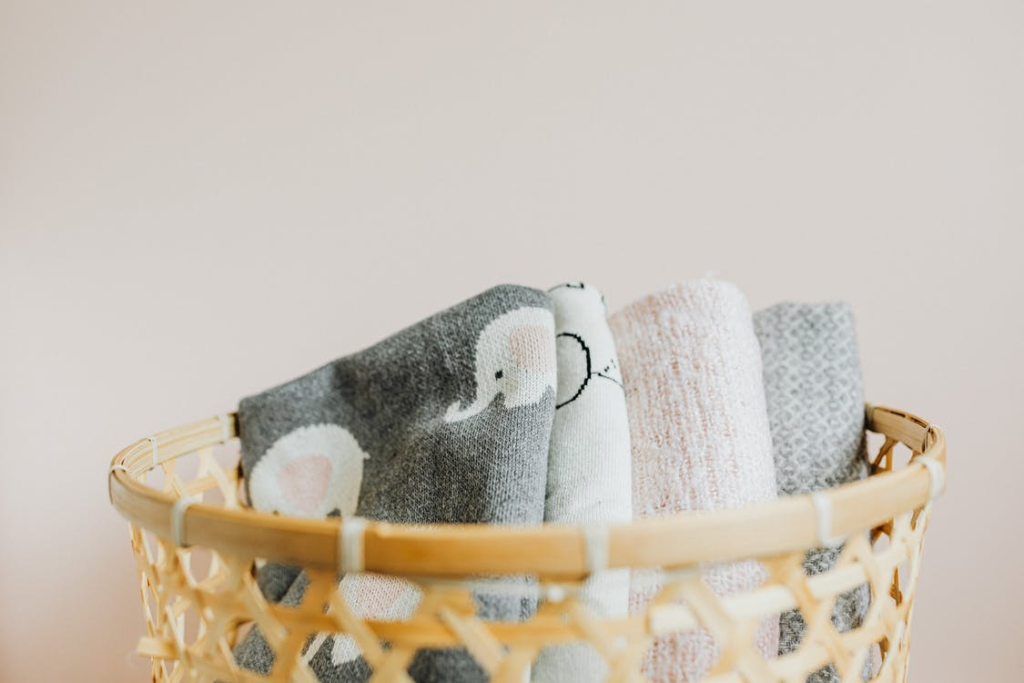
Not all products are made the same. That means, even if the detergent formula is high quality, it’s still not equally suitable for all purposes. Some laundry routines, for instance, are far from ideal for delicate baby skin. For that reason, treating baby clothes, as well as blankets, bedding, blankets, accessories, and cloth diapers, requires special attention.
All newborn babies, and sometimes even toddlers, have sensitive skin. But does that mean you must use specialized formulas exclusively and wash baby items separately? No, not really. It’s fine to treat them along with the rest of the adequate household laundry, but there are some rules that will ensure the best results.
Start by testing your regular detergent brand. Wash a couple of pieces and observe if there is any reaction on the baby’s skin. If yes, then look for hypoallergenic and fragrance-free formulas. Those will still be useful for the rest of the household laundry. If the reaction is persistent, switch to a specialized baby laundry detergent formula (and also consult the doctor, just in case).
On average, liquid detergents might be a better choice for washing baby clothes. The reason is that such formulas contain a lot of water, which means they dissolve quickly and might rinse better than powdered products. However, also keep in mind that the residue mostly appears due to inadequate washing methods.
Soap flakes, fabric softeners, and laundry pods are better to avoid. Complex “more in one” formulas might contain harsh chemicals while some softeners linger on the fibers and might provoke a reaction. Children’s sleepwear must be flame-resistant – soap flakes, as well as the bleach, can strip the fabric of those properties. In addition, toddlers sometimes find the laundry pod design irresistibly candy-like, and you don’t want to see your kid chewing one of those.
How to Wash Baby Clothes
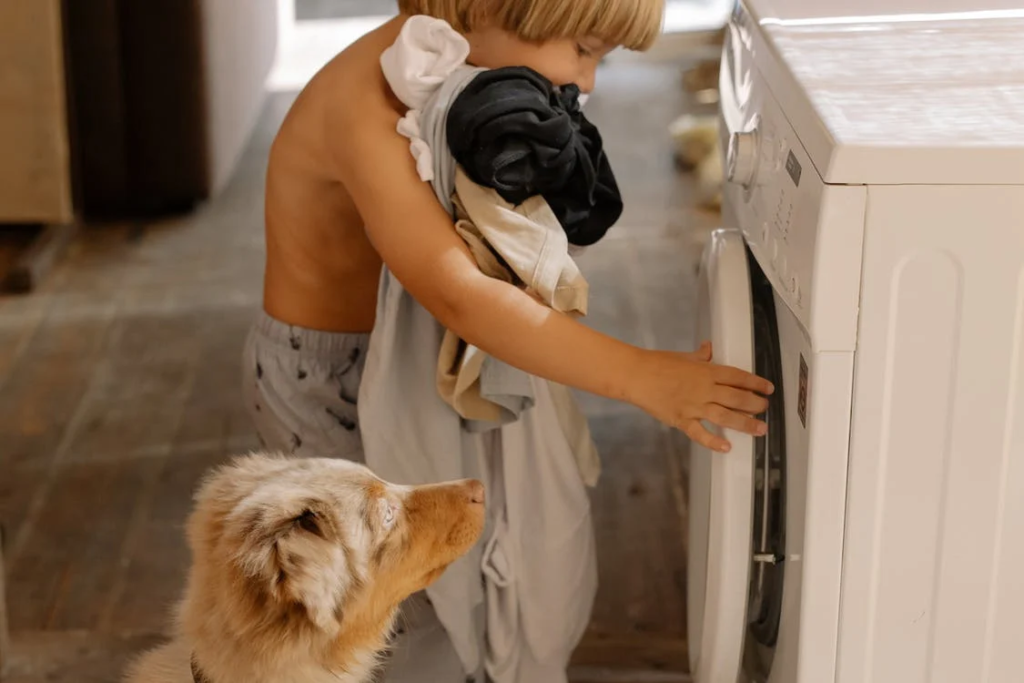
The rule of thumb – attack soils right away. Quick reaction ensures that the stain molecules will not set in the fabric, rendering it hard to clean. Baby wipes are fine as first aid, but try to soak the soiled items as soon as possible.
Also, keep in mind that all new baby clothes should be washed before being used for the first time. The same applies to plush toys. Consider the instructions on the garment’s care label for details.
Tiny baby garment items such as socks are best placed in a mesh laundry bag to prevent disappearing or potential damage.
Some specific stains require special attention:
- Protein-based stains: Fabrics soiled with milk formulas, breast milk, food stains, or feces should be immersed in cold water mixed with a stain-removing, enzyme-rich detergent formula for at least one hour. Follow with your normal washing process.
- Vegetables and fruits: The first aid is to immediately soak the garment and rinse it in cold water. In many cases, this should be enough to eliminate the stain. In case it persists, use the pre-wash stain remover and then wash the items as you usually do.
- Baby oil stains: Treat the stain with a pre-wash stain remover and then wash the item at the highest temperature the fabric care instructions allow. Air dry, occasionally checking if the stain has been removed. If it reappears when dry, repeat the process.
- Urine Stains: Pre-treating with products containing ammonia can fight the spoils set onto most fabrics (remember to test their color integrity first). Less persistent soils can be treated with regular stain-removal products. After treating, the garments can be washed normally.
If you’re unsure whether all products dissolved, double rinse.
How to Wash Cloth Diapers
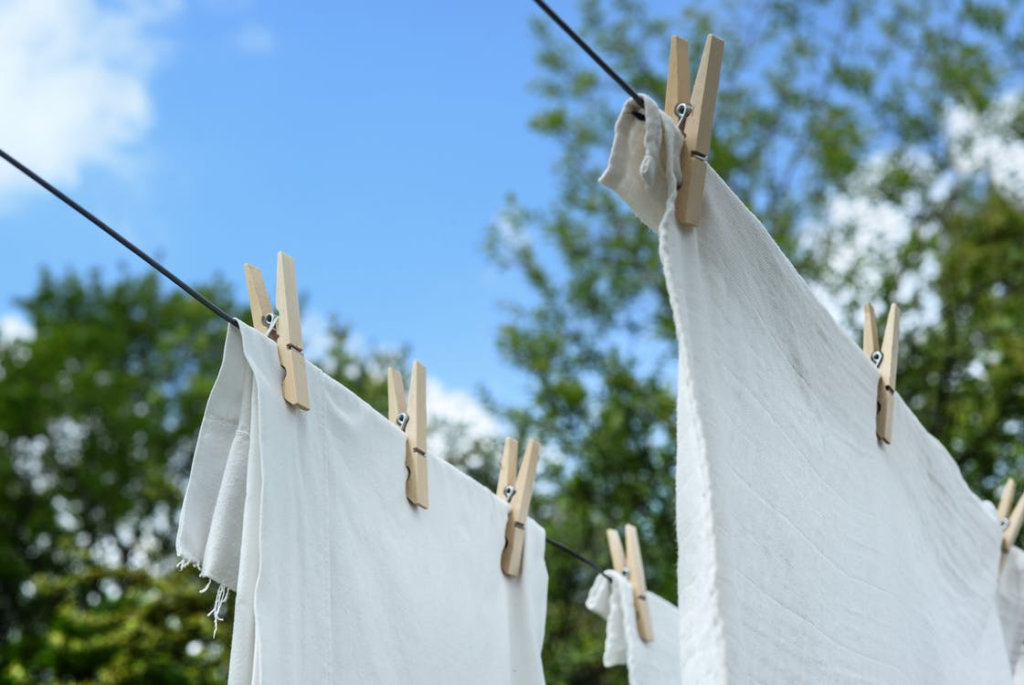
If you’re using common detergents, you might want to wash cloth diapers separately with a gentle formula. The reason is to avoid diaper rash that might get provoked by harsh ingredients. In case you and your baby face such an issue, change the regular method. Rinse cloth diapers in cold water, then immerse them in a mix of hot water and a mild detergent. Adding bleach is also an option here. Double rinse for added security.
Another method for washing cloth diapers is to soak them overnight in a cold pre-wash solution, free of fragrances and dyes. In the morning, wash the load in hot water, double rinse, and do not use softeners.
Look for formulas containing enzymes: Mannanase and Pectinase are excellent against food-based stains, while Protease dissolves protein-based ones.
Best Laundry Detergents for Underwear and Lingerie
Our experts often face the questions like “why can’t I wash the underwear with other clothes?” There are several essential answers here, so we’ll tackle each of them separately.
First of all, just like all clothes and fabrics are not the same, different pieces of underwear require different treatments. Sensitive items with silk and lace can’t withstand the same laundry washing methods as plain cotton boxers. Microfibre items with a lot of elastics can become saggy from regular overstretching, while the heavily colored fabrics might affect other garments when mixed together.
The next important detail is that underwear is exposed to a wide variety of bacteria that other garments are not. To eliminate them, you need to wash the items in temperatures of 60 degrees or higher. In other words, washing the mixed load together at 40 degrees will not only result in bacteria surviving on your underwear – but it will also transfer them to the rest of your clothes. On the other hand, many regular clothing items do not require higher temperatures in order to be adequately cleaned.
Eliminating Bacteria and Germs
High temperatures will eliminate most microorganisms, but they are not the only solution. Detergent formulas with high bleach content can produce effective results even at 20 degrees of Celsius – provided that the fabric can withstand such treatment.
Most enzyme-rich formulas are also efficient. Look for Protease in the ingredient list – it’s great against protein-based stains, even at lower temperatures and low pH levels. Supported by Cellulase, it’s ideal for washing sensitive lingerie, helping them regain a rejuvenated appearance.
Always read the care instruction label, and use the correct cycle and water temperature setting.
It’s best to pre-treat any stains as soon as possible, using enzyme sprays, commercial stain removers, or even just a splash of liquid laundry detergent. After washing, remove the load from the drum immediately to prevent odors and mold growth.
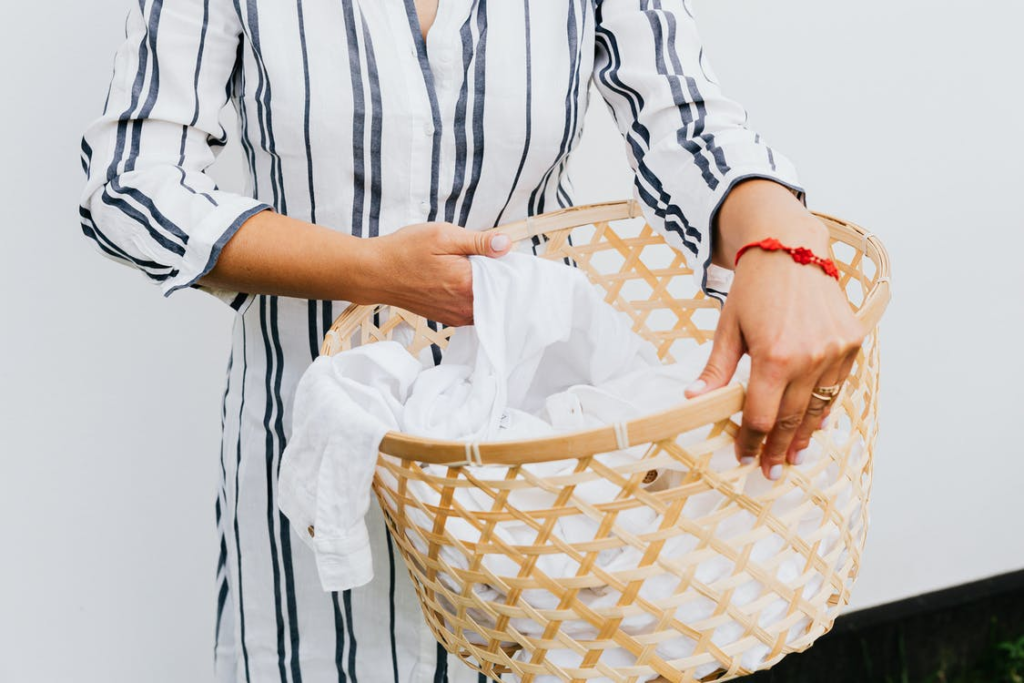
How to Wash Delicate Underwear and Women Lingerie
Sensitive fabrics are best to wash manually in order to preserve the material. Fill the tub with water as warm as you can handle, and choose the formula without enzymes. Follow the package instructions regarding the dose carefully – you don’t want to fight excessive foaming or soapy residue. Immerse the load, leaving it to soak for half an hour, occasionally shuffling the pieces to ensure that the detergent will work everywhere. Rub each piece gently, softly squeeze out excess water, and hang dry. It’s best to turn each item inside out and avoid direct sunlight in order to preserve the color.
If you prefer using the washing machine, follow the care label details thoroughly. Place all sensitive items in laundry bags to avoid damage.
How to Wash Bras
Avoid detergent formulas containing bleach or alcohol. If you don’t have an adequate product, you can use baby soap as the first aid alternative.
If your bras are machine washable, make sure to place them in laundry bags for protection, and don’t mix them in the same load with rough fabrics such as jeans. Proceed according to the instruction label, using a delicate cycle setting. Never tumble dry, and avoid putting them in the dryer – heat will break down delicate fabrics and elastic.
However, the best way to maintain the shape of your bras is to hand wash them. Immerse them in the warm water mixed with a small dose of detergent and let them soak for up to one hour, swirling them around occasionally. Rub the exposed parts gently and rinse, ideally using a showerhead. Hang them over the tub to drip and/or lay them flat to dry.
Bras containing underwire shaping should always be washed manually. Also, remember to remove the pads before washing a sports bra and treat them separately to preserve their shape.
How to Wash Female Tights
On average, all legwear, including tights, pantyhose, and stockings, requires manual washing in order to last. Hot temperatures, overstretching, and extensive rubbing will quickly destroy delicate elastic fibers.
It’s best to immerse delicate legwear in a mix of cool water and mild detergent, squeezing them to let the solution work. After half an hour of soaking, gently rinse the load in cold water, wrap in a towel to release excess moisture, and hang dry.
The same rules apply to any kind of elastic shapewear.
Pre-treat stains using enzyme sprays, stain removers, or liquid laundry detergent. Look for enzyme-rich detergents for machine washing. Place sensitive items in laundry bags before putting them in the machine. Lace, bras, and tights should be washed manually.

How to Wash Silk
Highly sensitive silk garments are best hand-washed, although it’s possible to achieve successful results in the washing machine – provided that you follow a strict set of rules.
Always check the care instruction label before cleaning. It’s best not to wash garments marked with “dry cleaning” at home, but if you must, hand wash them in the gentlest possible way. Also, test the item for colorfastness before washing it along with something else. It’s best to dampen a small area and press it against a white tissue to see if any leaks will occur.
If you choose to wash manually, mix cold water with mild detergent formula, ideally developed specifically for use with delicate fabrics. Pre-treat the fabric with a gentle stain removal solution if needed and turn the item inside out. Submerge the garments and let them soak for up to 30 minutes maximum. Rinse carefully in cold water. Never twist silk to remove excess water – roll it flat in a towel instead, or hang to drip and dry avoiding direct sunlight.
A word from our experts: Never wash silk with chlorine bleach. If you need to refresh its appearance, look for laundry detergents and cleaning sprays containing optical brighteners. OBAs (optical brightening agents) and FWAs (fluorescent whitening agents) deposit on garment fibers during the washing cycle and don’t get removed with rinsing. They work by absorbing ultraviolet light and reflecting it to visually convey a brightening effect. This method is particularly convenient for minimizing the visibility of yellow and orange hues.
For machine wash, place the silk item in a protective mesh bag. Use a dedicated detergent for sensitive fabrics and set the machine to a delicate cycle program. Never tumble dry – after the short washing cycle is over, proceed in the same way as described for manual washing.
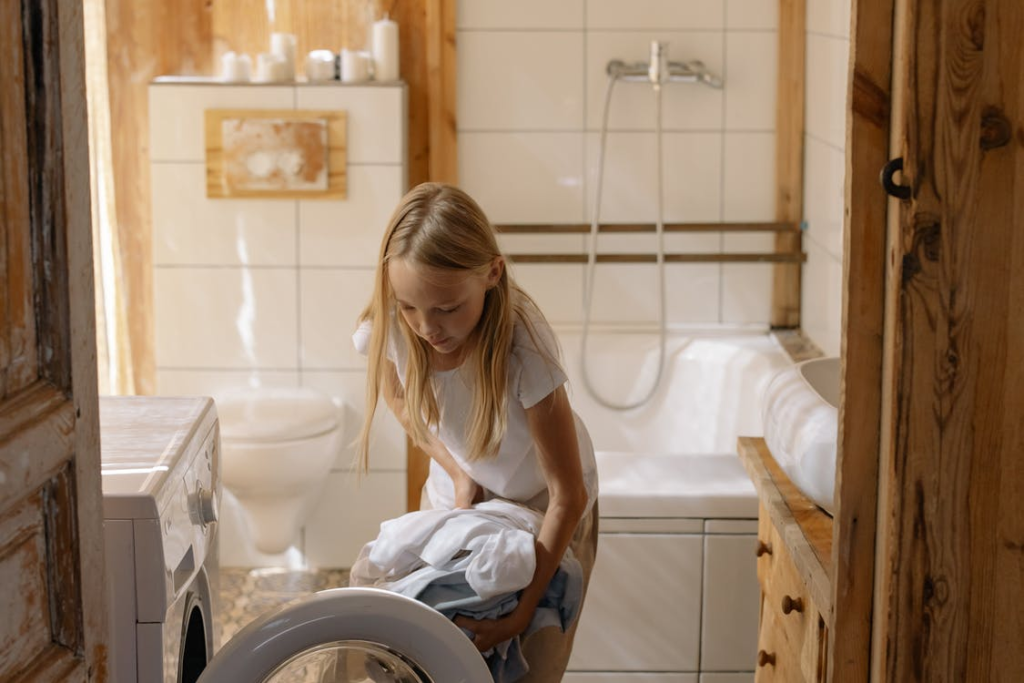
Frequently Asked Questions
Q: How much detergent to use?
A: Dosing is important, especially for machine washing. It’s best to follow the instructions on the product package.
Q: What is wash cycle length, and why is it important?
A: The term defines the entire period between the start and end of washing one machine load. Longer cycles employ more mechanical energy on your clothes, necessary for removing “stubborn” stains. However, such treatment is not suitable for all fabrics. In order to preserve the appearance of your sensitive garments, use the shortest applicable cycle.
Q: What is cycle speed, and why does it matter?
A: In simple words, faster movement will enhance the detergent’s power, especially in low water temperatures. Always check the care labels to ensure that the cycle speed you use is appropriate.
Q: What is considered low washing temperature?
A: On average, cold washing cycle temperatures range between 20°C and 30°C.
Q: What are the best laundry detergents for low-temperature washing?
A: Detergents and pods specially formulated for cold water, and/or formulas containing enzymes.
Q: What to wash in cold water?
A: Fine white garments, black and similar dark loads, vibrant, colorful items, and all lightly soiled garments that need just refreshing.
Q: What washing temperature kills bacteria?
A: Ideally, you should use temperatures from 60°C up. The higher the temperature, the more effective results. Check the care label to ensure that you are using the appropriate setting.
Q: What washing machine program is best for delicate fabrics?
A: Short cycles with up to 30°C water temperature and no tumble dry.
Bottom line
To get the best results, you don’t have to buy a dedicated laundry detergent for every type of wash and every kind of fabric. Our recommendation is to make a summary of your regular washing loads, and then find one or two products that can cover your needs. The best laundry detergent for you is the one that contains the right set of ingredients, ideally also suitable for the region you live in. Why do we say that? Because hard water also affects washing results.
If you have any specific questions or you are thinking about starting your own detergent production, our experts are ready and available 24/7.




